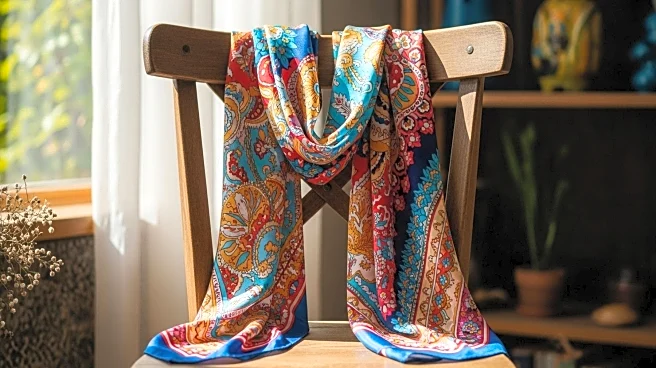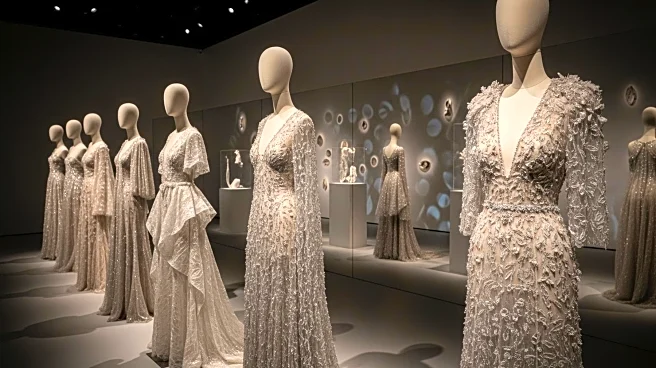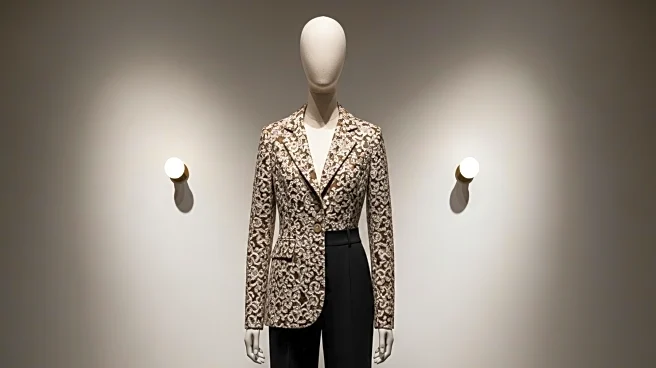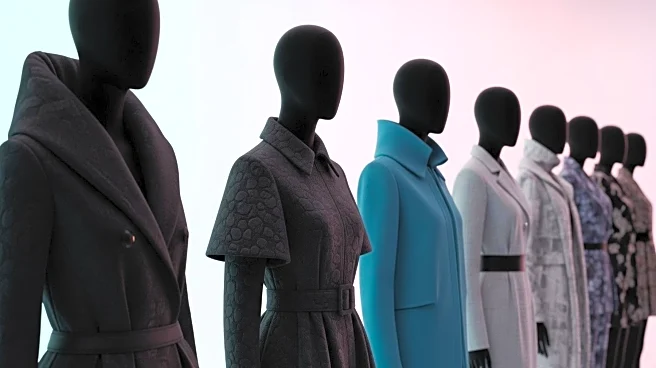What's Happening?
Nathan Jenden, the chief design officer at Diane von Furstenberg (DVF), has introduced the Spring 2026 collection, focusing on knitwear and easy-to-wear pieces. The collection draws inspiration from the Age of Aquarius, featuring free-flowing silhouettes and sheer fabrics that promote effortless movement. Jenden's designs prioritize comfort and versatility, reflecting the modern woman's lifestyle. The collection includes items like copper Lurex tennis polos and merino silk ballerina wrap cardigans, designed to be 'pull on, pull off' garments. Jenden has deliberately omitted traditional fastenings such as buttons and zippers, aiming for simplicity and ease in dressing.
Why It's Important?
The Spring 2026 collection by Diane von Furstenberg highlights a shift in fashion towards comfort and practicality, aligning with current consumer preferences for versatile and easy-to-wear clothing. This approach caters to the evolving needs of women who seek stylish yet comfortable attire for various occasions, including work. By focusing on knitwear and eliminating cumbersome fastenings, the collection addresses the demand for garments that offer both style and functionality. This trend may influence other fashion brands to adopt similar strategies, impacting the broader fashion industry by prioritizing consumer comfort and adaptability.
What's Next?
As the fashion industry continues to evolve, Diane von Furstenberg's emphasis on comfort and versatility may inspire other designers to explore similar themes in their collections. The focus on knitwear and simplified designs could lead to increased consumer interest and demand for such garments. Fashion retailers might adjust their offerings to include more versatile and comfortable clothing options, potentially influencing market trends. Additionally, the collection's success could encourage DVF to further innovate in future collections, maintaining its relevance in the competitive fashion landscape.
Beyond the Headlines
The Spring 2026 collection by Diane von Furstenberg not only addresses consumer preferences but also reflects broader cultural shifts towards simplicity and ease in daily life. The absence of traditional fastenings in the garments symbolizes a move away from complexity, resonating with individuals seeking liberation from restrictive clothing. This approach may contribute to a cultural dialogue about the role of fashion in enhancing personal freedom and comfort, potentially influencing societal attitudes towards clothing choices.











